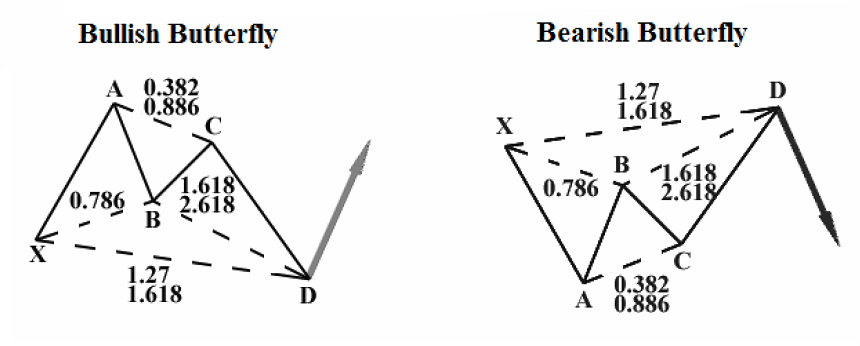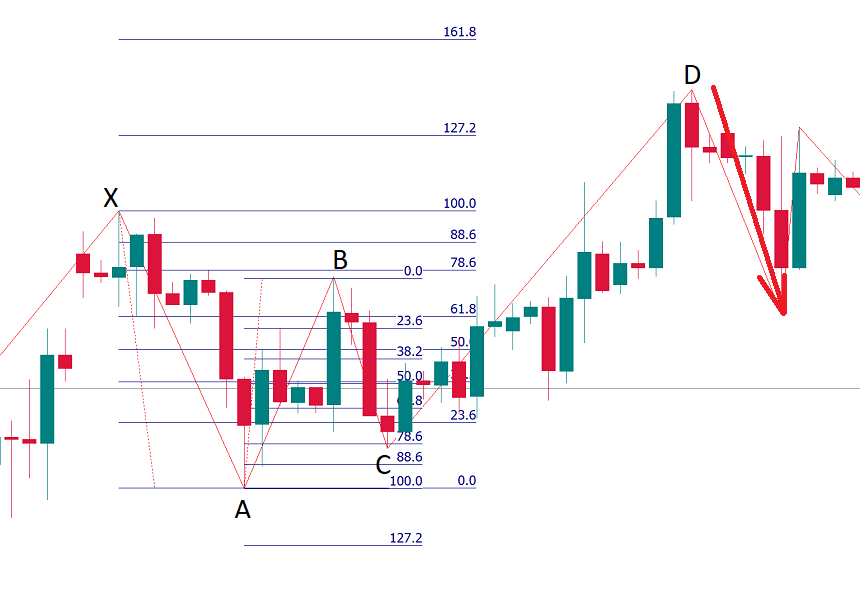Mariposa
Esta información no son consejos para inversión
El patrón Mariposa es otra forma de patrones de Gartley. Fue descubierto por Bryce Gilmore y Larry Pesavento. Este patrón generalmente se forma cerca de los mínimos y máximos extremos del mercado y predice una reversión.

La principal característica especial del patrón Mariposa es que CD se extiende más allá de XA.
Aquí están los parámetros claves de un patrón Mariposa:
- El punto B está en hasta un 78.6% de retroceso de XA.
- El punto C puede estar en el 38.2%-88.6% de retroceso de AB.
- El punto D se puede encontrar en la extensión de 161.8%-261.8% de AB o en la extensión de 127.2%-161.8% de XA. La diferencia con un patrón de Gartley es que D no está en el retroceso de XA sino en su extensión.
Cómo operar
La entrada se encuentra en el punto D, que es una potencial zona de reversión. El Take Profit puede estar en el 61.8% de CD (TP1), y/o en 127.2% de CD (TP2). También puedes apuntar a los puntos B (un enfoque conservador) y A (un enfoque agresivo). Coloca un Stop Loss en línea con tus reglas de gestión de riesgos.
Aquí el ejemplo de un patrón Mariposa bajista.

El punto B está en el 78.6% de retroceso de XA. El punto C se encuentra en el 76.8% de retroceso de AB. El punto D está en la extensión de 127.2%-161.8% de XA.
Otros artículos en esta sección
- Estructura de un Robot de Trading
- Construyendo un Robot de Trading sin Programar
- ¿Cómo Lanzar Robots de Trading en MetaTrader 5?
- Trading algorítmico: ¿de qué se trata?
- Trading algorítmico con MQL5
- ¿Qué significa "truncamiento"?
- Ichimoku
- Patrón Diagonal Inicial
- Patrón de Ondas de Wolfe
- Patrón de Tres Impulsos
- Tiburón
- Cangrejo
- Murciélago
- Gartley
- ABCD
- Patrones Armónicos
- Introducción al análisis de las Ondas de Elliott
- Cómo operar los rompimientos
- Trading de Forex noticias
- ¿Cómo colocar una orden Take Profit?
- Gestión de riesgos
- ¿Cómo colocar una orden Stop Loss?
- Indicadores técnicos: operando divergencias












